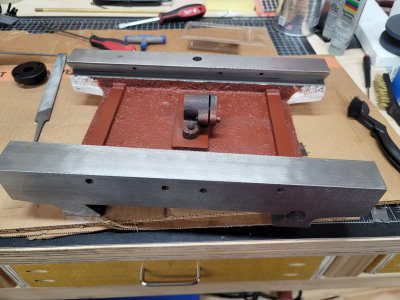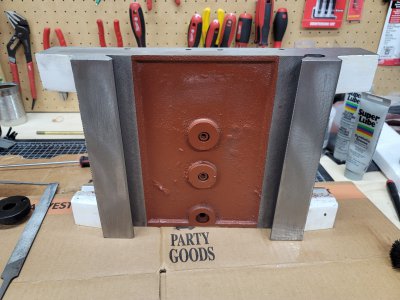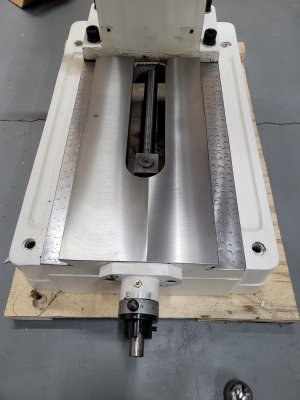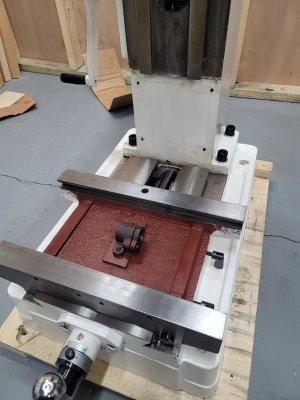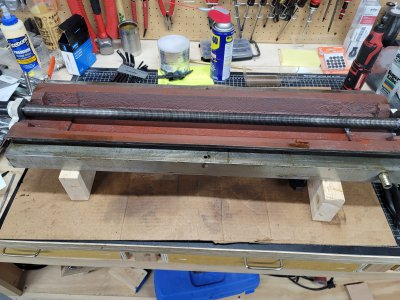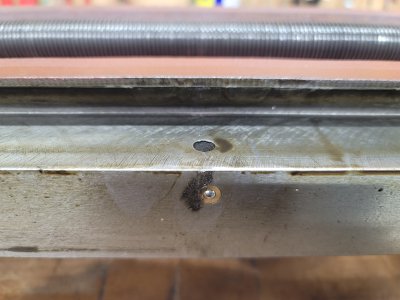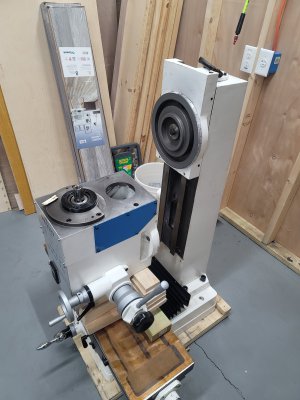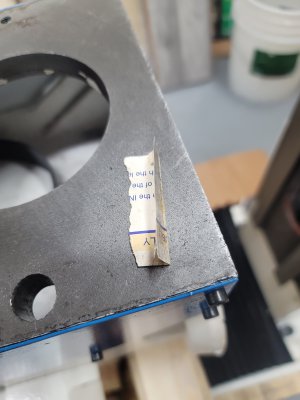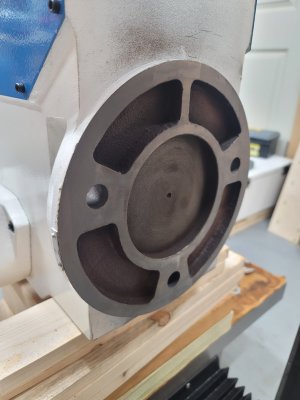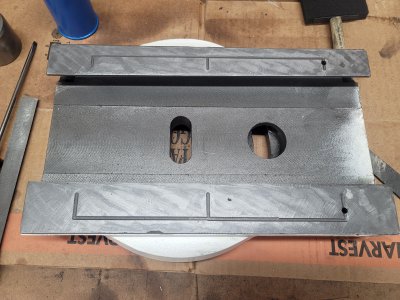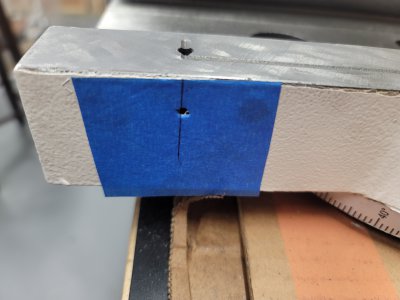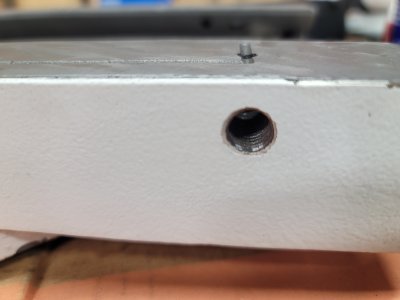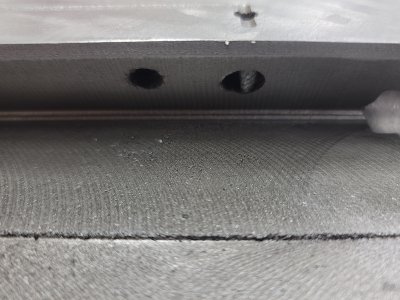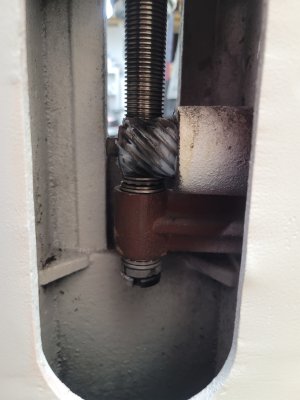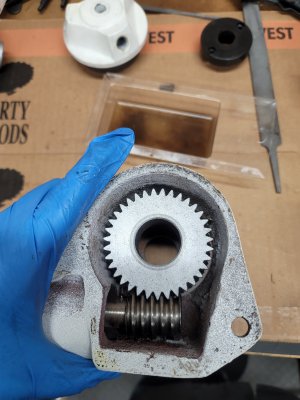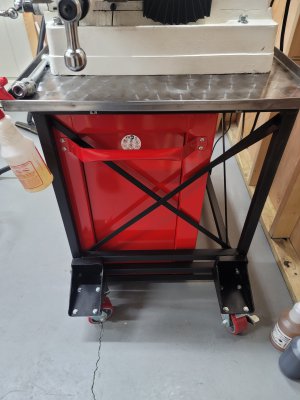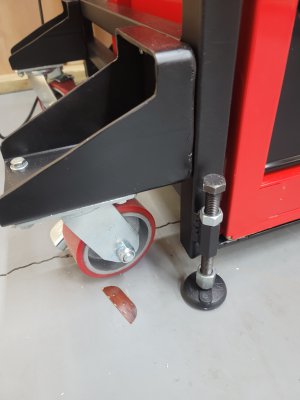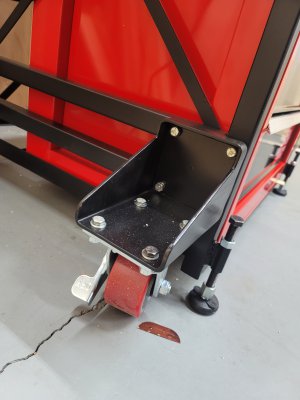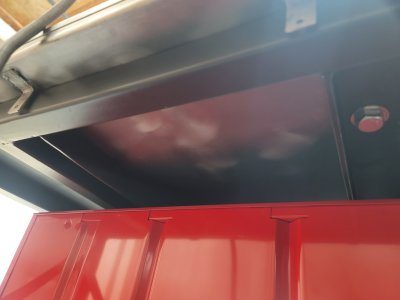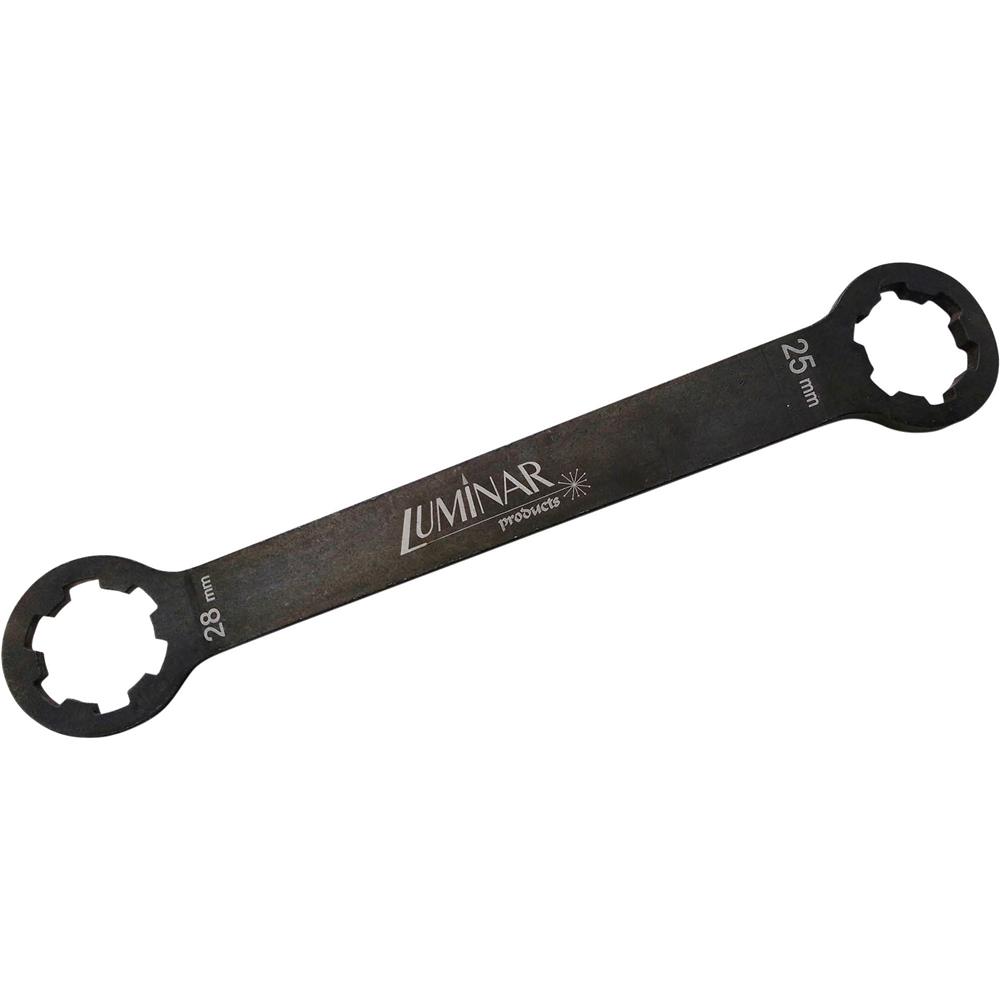- Joined
- Mar 12, 2021
- Messages
- 63
Hello!
I wanted to make a post on the PM-932V I know I had talked about it and him hawed in a "what to buy thread" and I have had it a few months now and due to various reasons finally got it setup and first chips made so I figured I could share some info about it.
In short its a PM932 but with a 3 phase motor, vfd goes up to 3200 RPM uses a ribbed pulley setup with two speed ranges not super quick to change the belt/range but not had either.
The biggest difference is honestly the lack of support for Z axis power feed. the crank for the z axis is quite stiff and uses a set screw index into a flat. which also means it stays wherever you leave the crank you cant just disengage it so it sits out of the way.
Wanted to share the finished setup pic right away but the detailed transit teardown and setup to follow if you are interested in any of those details.

Mill arrived very quick less than a week from PM to get to me here in WI

slightly worries as much of the crate looked like it had a run in with someone with anger management issues. but its very thin plywood and everything inside looked fine.

"uncrated" still on its crate pallet then the actual pallet but came remarkably safely also of note there is parts hiding in the table under the protective paper.
Getting the crate base off of the pallet was interesting, as the pallet is too big for a engine hoist to grab it. In the end it was a crowbar and lots of blocking that got it free of the actual pallet, and then worked it back down to the ground and then we were able to lift it off the shipping crate base as that is low enough profile for the engine hoist to go over (sorry no pics of that process). set it down on some blocking and then cut the shipping crate base to a nice smaller platform.

I pulled the table off (engine hoist and the tslots clamps made it easy to help remove as the sling took all the weight) to make it narrower to fit down my stairs as well as the the motor, the control box and the wiring box on the back, so could slide a appliance dolly and have a nice flat back of the column to be blocked against the dolly and strapped down. remarkably pretty easy but things went very quick so once again lacking some pics of the process

the wiring box on the back was the worst to remove as the screws that hold it onto the machine are behind the main circuit or wiring board but I was able to get enough slack on the wires to access those screws to remove it. Pulling all this the table and the saddle probably reduced machine weight by about 200 lbs which certainly helped in transporting it. I also wanted to take apart and clean it anyhow.
next up more teardown info/ pics
I wanted to make a post on the PM-932V I know I had talked about it and him hawed in a "what to buy thread" and I have had it a few months now and due to various reasons finally got it setup and first chips made so I figured I could share some info about it.
In short its a PM932 but with a 3 phase motor, vfd goes up to 3200 RPM uses a ribbed pulley setup with two speed ranges not super quick to change the belt/range but not had either.
The biggest difference is honestly the lack of support for Z axis power feed. the crank for the z axis is quite stiff and uses a set screw index into a flat. which also means it stays wherever you leave the crank you cant just disengage it so it sits out of the way.
Wanted to share the finished setup pic right away but the detailed transit teardown and setup to follow if you are interested in any of those details.
Mill arrived very quick less than a week from PM to get to me here in WI
slightly worries as much of the crate looked like it had a run in with someone with anger management issues. but its very thin plywood and everything inside looked fine.
"uncrated" still on its crate pallet then the actual pallet but came remarkably safely also of note there is parts hiding in the table under the protective paper.
Getting the crate base off of the pallet was interesting, as the pallet is too big for a engine hoist to grab it. In the end it was a crowbar and lots of blocking that got it free of the actual pallet, and then worked it back down to the ground and then we were able to lift it off the shipping crate base as that is low enough profile for the engine hoist to go over (sorry no pics of that process). set it down on some blocking and then cut the shipping crate base to a nice smaller platform.
I pulled the table off (engine hoist and the tslots clamps made it easy to help remove as the sling took all the weight) to make it narrower to fit down my stairs as well as the the motor, the control box and the wiring box on the back, so could slide a appliance dolly and have a nice flat back of the column to be blocked against the dolly and strapped down. remarkably pretty easy but things went very quick so once again lacking some pics of the process
the wiring box on the back was the worst to remove as the screws that hold it onto the machine are behind the main circuit or wiring board but I was able to get enough slack on the wires to access those screws to remove it. Pulling all this the table and the saddle probably reduced machine weight by about 200 lbs which certainly helped in transporting it. I also wanted to take apart and clean it anyhow.
next up more teardown info/ pics


